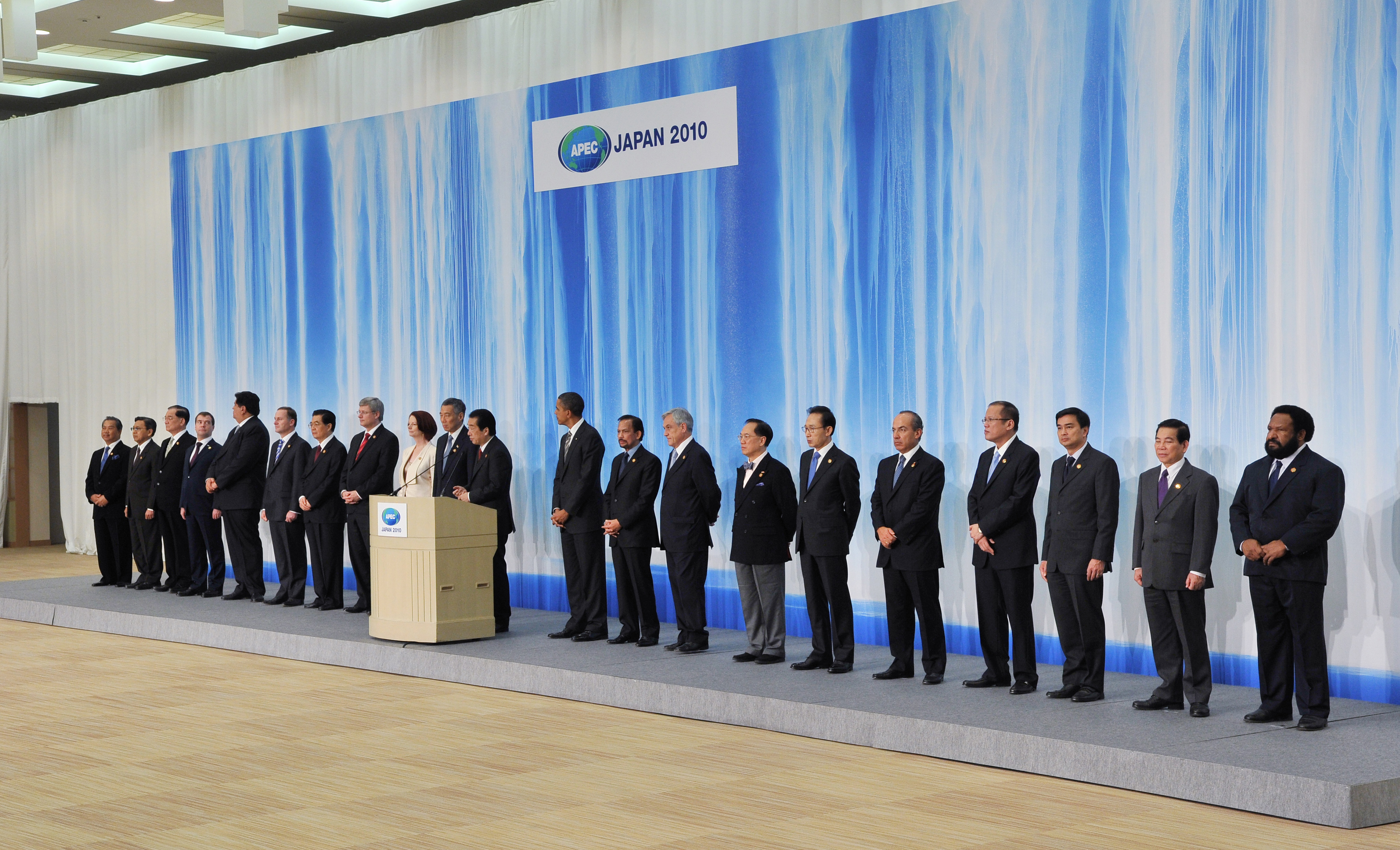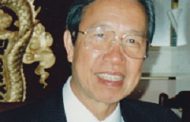YOKOHAMA – Hôm chủ nhật, các nhà lãnh đạo của 21 nước bao quanh Thái Bình Dương đồng ý cùng làm việc để xây dựng tự do mậu dịch toàn vùng, là điều kiện thiết yếu để phát triển bền vững. Từ đảo quốc Brunei đang nổi lên cho tới cường quốc kinh tế hạng nhì thế giới là Trung Quốc, 21 thành viên APEC khẳng định tránh dựng các rào cản, và rút lại các biện pháp bảo hộ mậu dịch đã ban hành trong thời gian khủng hoảng vừa qua.

Bản tuyên bố kết thúc 2 ngày họp ghi “Chúng tôi tái xác nhận chủ trương không lay chuyển để tìm kiếm tự do mậu dịch và đầu tư cởi mở trong vùng – chúng tôi phải có những biện pháp xây dựng 1 nền tảng cho tăng trưởng bền vững hơn và cân bằng hơn trong tương lai”.
Mục tiêu đề nghị của Thủ Tướng Naoto Kan là thực hiện tự do mậu dịch châu Á Thái Bình Dương từ nay đến năm 2020. Nhưng, vấn đề là phức tạp vì tính đa dạng, và APEC không có quyền lực về thương luợng.
Sự biểu dương ý chí thống nhất của hội nghị APEC là trái nguợc hội nghị G-20 họp chỉ mấy ngày trước tại thủ đô Nam Hàn – nhưng, các quan ngại về sự yếu ớt của hồi phục đã làm tăng tính cấp bách cho nhu cầu vận động tự do mậu dịch.
Trong phần phát biểu của mình, chủ tịch Hồ Cẩm Đào tuyên bố “Sự hồi phục không vững chắc và sự mất cân bằng gây bắt trắc – tình hình nhân dụng tại các là nước phát triển là mù mờ, trong khi các thị trường mới nổi đối diện áp lực của lạm phát và hiện tượng bong bóng của giá cả địa ốc”.
Phóng viên nhận thấy 9 nước đang đàm phán để thực hiện tự do mậu dịch trong phạm vi gọi là “xuyên Thái Bình Dương – TPP”, gồm Hoa Kỳ, Australia, New Zealand, Malaysia, Vietnam, Peru, Chí Lợi, Brunei và Singapore. Ngoài ra, nhóm gọi là ASEAN + 3 gồm thêm Nhật, Nam Hàn, Trung Quốc cũng đang thương luợng. Mậu dịch và đầu tư mở rộng có thể tạo ra việc làm, nhưng áp lực của cạnh tranh sẽ đe dọa môi trường sống.
Mặt khác, ngoại trưởng Nhật hô hào Trung Quốc trở lại điều đình về phát triển tiềm năng dầu khí tại các vùng đảo tranh chấp – phúc đáp của Trung Quốc là hãy để căng thẳng lắng xuống trước đã.
Thủ Tướng Kan chưa định hàn gắn các bất đồng với chủ tịch Hồ trong lúc giảm phàn nàn về chuyến viếng thăm của TT Medvedev tại đảo bị chiếm vào thời gian cuối thế chiến.
Cũng như Nhật, các nước khác đang âu lo về sức mạnh ngày càng tăng và thái độ xác quyết của Bắc Kinh. Sau cùng, bản tuyên bố chung của hội nghị APEC cũng khẳng định ý muốn tiến tới 1 hệ thống hối suất do thị trường quyết định, và nhờ đó tránh đuợc căng thẳng về tỉ giá tiền tệ tại thượng đỉnh G-20. Lần đầu tiên, các nhà lãnh đạo APEC chấp nhận 1 chiến luợc vì tăng trưởng cân bằng, bền vững và đổi mới trong vùng và tại các nước – APEC cũng xác nhận ý định tăng tiến an ninh về năng luợng và kiểm soát khí thải gây hiệu ứng nhà kính.

TÀI LIỆU BỔ TÚC
Japan is test case for Pac Rim free trade zone
YOKOHAMA, Japan (AP) – As Asia-Pacific leaders committed themselves to achieving a Pacific-wide free trade zone at an annual summit Sunday, host Japan may prove a key test case for how realistic that vision is.
Acknowledging that Japan’s economic power is declining, Prime Minister Naoto Kan declared his country must open up its markets and embrace free trade – or risk getting left further behind other regional rivals.
“Japan is determined to reopen itself,” Kan said at a press conference that wound up the Asia-Pacific Economic Cooperation forum, alluding to the historic role that Yokohama, which hosted the summit, played more than 150 years ago as one of the first Japanese ports to open up to the West.
That bold declaration represents a change for Japan, which for decades had been ruled by conservative administrations that were reluctant to engage in trade liberalization and were closely tied with farmers who fiercely oppose lowering protective tariffs. Imported rice, for example, is subject to a 778 percent tariff.
Japan and the other 20 members of APEC will face many such tough choices as they strive to execute their shared commitment to free trade and greater regional integration as outlined in the leaders’ communique issued at the end of the weekend meeting.
Their overarching goal: To work toward establishing a Free Trade Area of the Asia-Pacific that would envelope all members, from behemoths China and the U.S. to tiny Brunei and New Zealand. Slashing tariffs and other barriers to imports and investments, the so-called FTAAP would cover half the world’s global commerce and two-fifths of its trade. Kan said the rough target date was 2020.
The Asia-Pacific region has led the world’s still-weak recovery from the financial crisis, and the region’s leaders are convinced that open markets are a sure way to ensure future growth. Still, creating such a huge free trade zone is a highly complicated endeavor given the region’s diversity and vested interests opposed to opening markets.
China’s transformation into the world’s second-largest economy – overtaking Japan this year – and the dynamism that has helped it lead the global recovery, was made possible mainly by opening to foreign trade and investment. While Washington complains that Beijing keeps its currency artificially low, giving China’s exports an unfair price advantage, consumers have benefited enormously from lower-priced imports.
Japan’s economy, meanwhile, has been stagnant for two decades, stymied by weak demand and a shrinking population even as regional rivals such as South Korea – which is racing ahead of Japan in free trade deals – are becoming formidable competitors.
“Other Asian economies are catching up to or surpassing Japan,” Kan said Sunday after the summit ended.
“Japan would like to stay as a country with vigor, and to survive in this context, we really need to have economic integration with Asian and Pacific Rim friends and countries so that together we can grow,” he said.
Although Japan has long sought to boost demand at home, the resource-scarce country remains strongly dependent on exports.
Driven by a sense of urgency, Japan’s government – led by the ruling Democrats, who overthrew the long-ruling conservatives last year – announced a striking new openness toward free trade in a policy paper last week, just before the APEC meetings, as a way to revive growth.
Calling the present a “watershed moment,” Tokyo promised to “open up the country.” It pledged to wrap up free trade negotiations with Australia, resume suspended trade talks with South Korea, and seek new free trade partners, warning the country needed to become a more attractive place to invest. On Sunday, Japan signed a free trade deal with Peru.
Japan must now decide whether to join a U.S.-backed free trade grouping called the Trans-Pacific Partnership, which the APEC leaders held up as a building block for an eventual Pacific-wide free trade zone. The U.S., Australia, Malaysia, Vietnam and Peru are negotiating to join the TPP bloc, which currently brings together the small economies of Chile, New Zealand, Brunei and Singapore.
Big Japanese corporations are urging Kan to join or put Japan at a disadvantage, but he is already facing an intense fight from farmers who fret that a flood of cheaper agricultural products will ruin them.
“We small-scale farmers cannot compete with large-scale growers abroad,” said Ryoichi Fujimaki, a 43-year-old vegetable farmer near Yokohama.
While Kan has also promised to revitalize Japan’s farming industry and overhaul agricultural policy, but hasn’t given details.
Some APEC leaders urged Japan to consider the big picture.
“You cannot guide your integration policy on only one sector,” said Chilean President Sebastian Pinera, noting that agriculture represented less than 2 percent of Japan’s economy. “If the country as a whole will win because of the FTA, that means it can compensate the losers and still there will be something for the winners.”
By MALCOLM FOSTER and TOMOKO A. HOSAKA [Associated Press]
AP writers Elaine Kurtenbach, Mari Yamaguchi and Miki Toda contributed to this report.










































